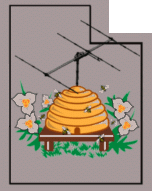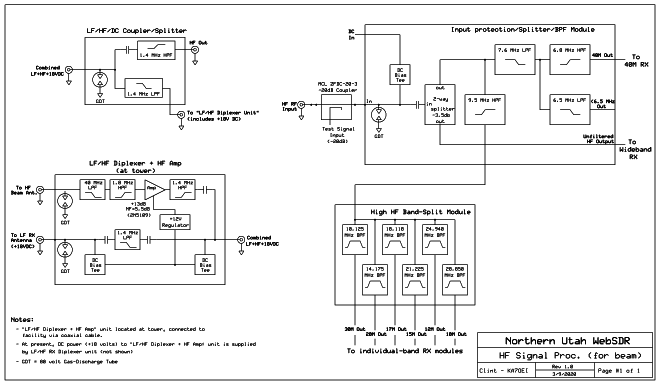 |
Northern
Utah WebSDR Receiving equipment RF Distribution and filtering |
 |
Northern
Utah WebSDR Receiving equipment RF Distribution and filtering |
|
Important note regarding kits
available for some of the filter/splitter modules:
A kit is available to construct the filter module depicted in the upper-middle circuit of Figure 2 - the "Low HF Splitter". Please note that I have had nothing to do with the production of this kit. Having said that, provided that the included parts are of reasonable quality and care is taken in its construction, reports indicate that it can work pretty well. BE AWARE that in construction of circuits like this, having a NanoVNA or similar to "dial in" the inductance values (squeezing together, spreading and/or removing a turn) may be essential to obtain the best performance. |
 |